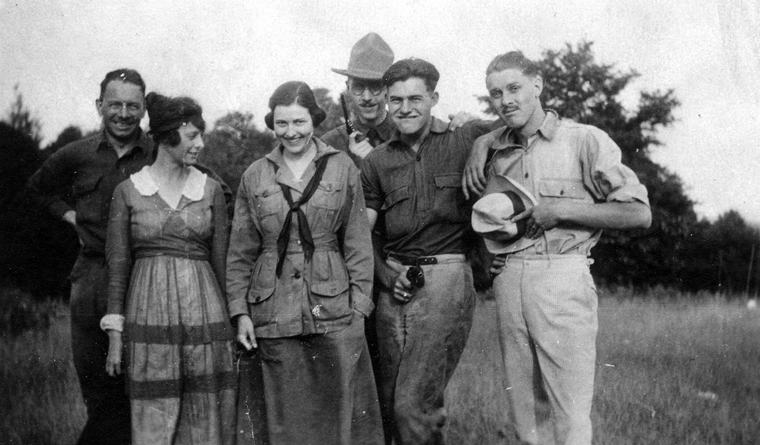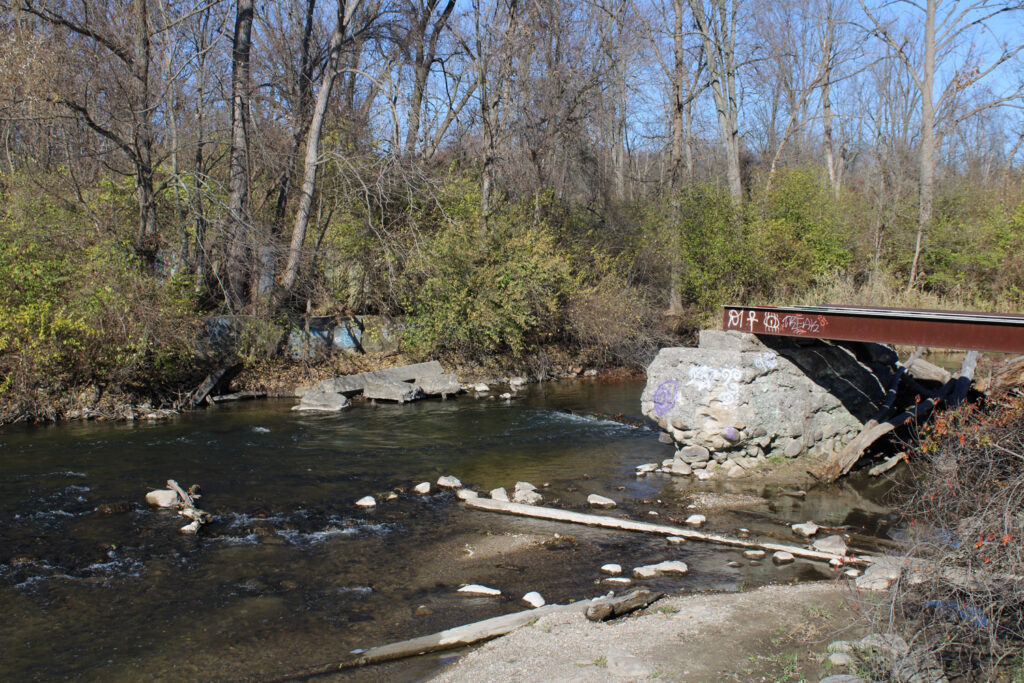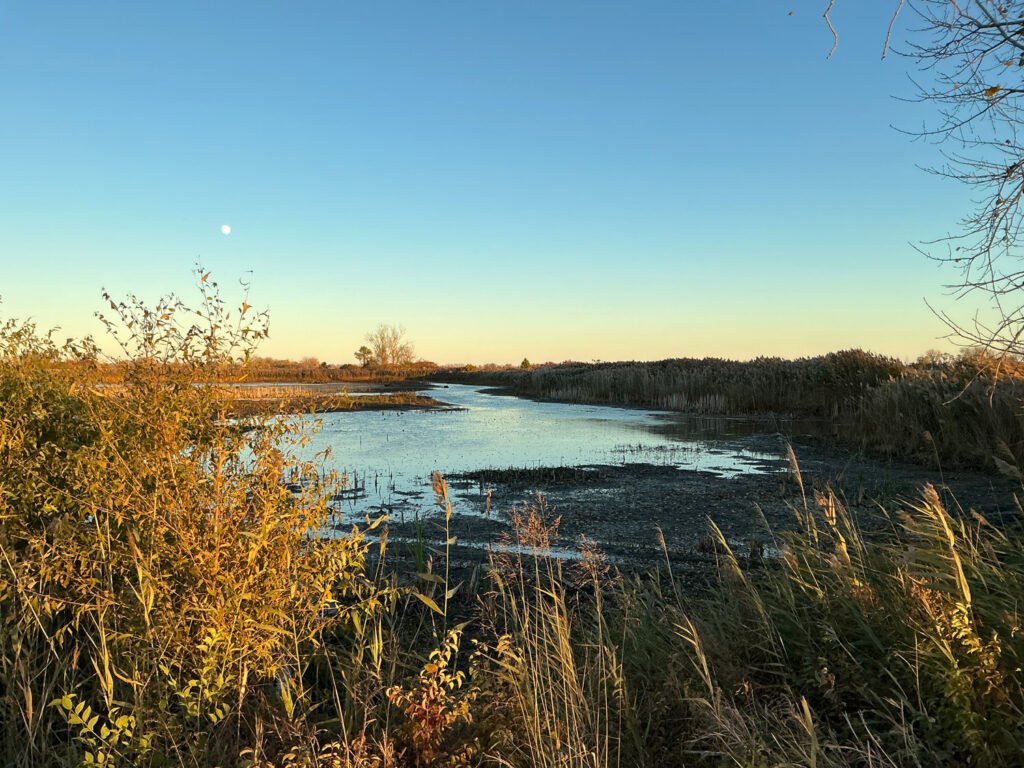Petoskey — Ernest Hemingway spent most of his boyhood summers at his family cottage nearby—one piece of what he called “the last good country.” This is where his nearly religious reverence for nature was born. Here, he was catechized by fur traders and Indians, baptized in trout-filled rivers flowing through America’s greatest cathedral: the northern wilderness. In the Petoskey of the early 20th century, nature was still violent and demanded respect, forcing the young man to learn the dangerous balance between life and death.
Northern Michigan has changed a lot since those days. It’s been corrupted. And, to some extent, Hemingway is to blame. He’s why I came up, after all.
A good friend of mine, Will Gagnon, an English student and vineyard worker, was celebrating his birthday in his hometown of Petoskey, and I was itching to drive north, so I did.
I met him at one of the two vineyards he works for. Off a dirt road, somewhere between Charlevoix and Petoskey, I found Folklor Wine & Cider. The sky was gray, and it had been raining on and off the whole drive up. Will was still in the fields when I arrived, and the tasting room hadn’t opened yet, but I asked nicely and they let me in. I got to talking with the vintner while I waited, and he boasted that pesticides had never touched his fruit; that the soil was healthy; that the land’s gift was honest.
Will took me out to where he was digging post holes for a new section of grapes, near rows of the apple and pear trees. My shoes, worn through the soles with holes in the heel, weren’t adequate. The wet grass accosted my feet, demanding that I pay the earth some attention. It was beautiful.
I convinced Will’s boss to let him off early, and we joined his family for dinner. Afterward, I asked about the best spots to check out if I wanted to see Petoskey through Hemingway’s eyes. He had just the place.
Will’s girlfriend’s family has a cabin on Walloon Lake, same as Hemingway’s family cabin, Windemere. We grabbed a cheap bottle of wine from a gas station and drove out to Walloon, where we hopped into the kayaks and paddled the lake.
Sunset was fast approaching and rain was falling steadily. Walloon is horseshoe-shaped, and we had to paddle the length before making it to Windemere, privately owned and not for show. Discussing his childhood in the North, the way the land has been tamed, and the disposition of lake trout (all while passing a bottle back and forth) made us feel like real Hemingway types. We explored the lake fearlessly in the dark, with no care for the thunder above.
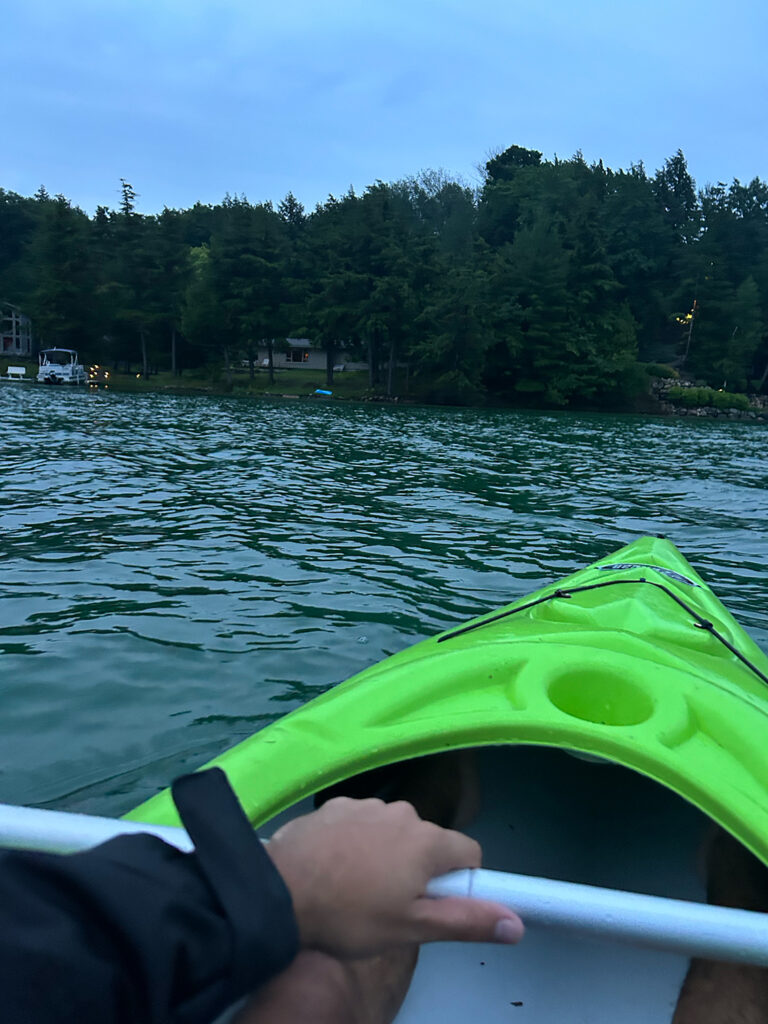
Eventually, we made it near the unimpressive cabin—unimpressive because of the gaudy McMansions and tasteful lake houses spread across the shore the whole way. And maybe that’s why we felt safe in unsafe weather: We weren’t being brave, the place was tame. The small cabin, short and gray with a green roof, built by Hemingway’s father in 1898, had been dwarfed by those seeking comfort rather than adventure.
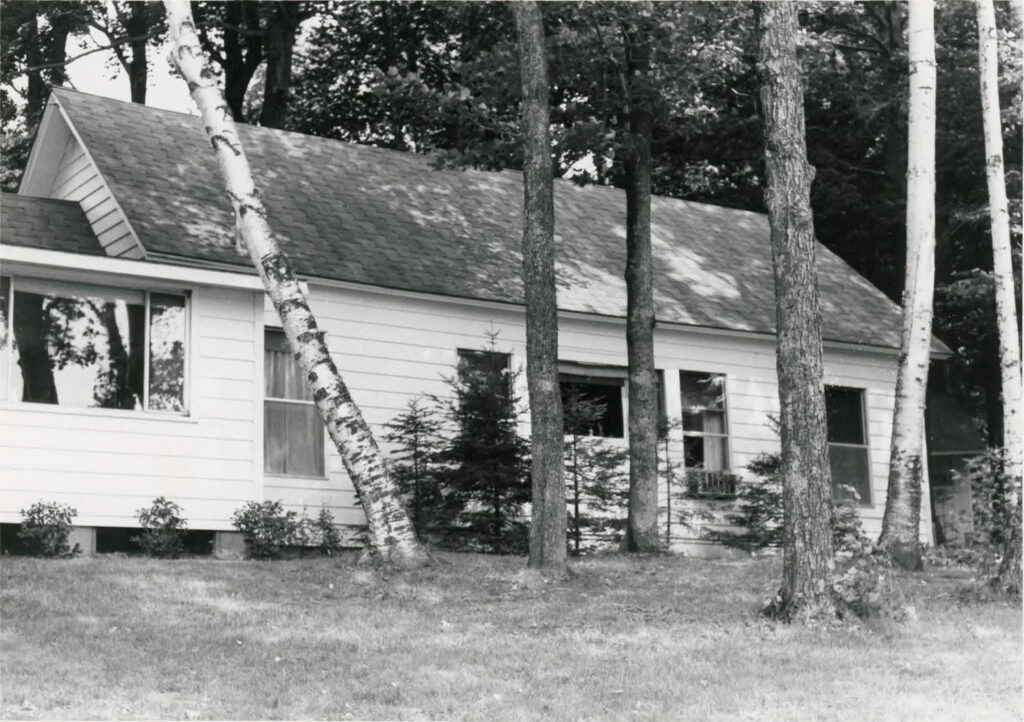
The next day, Will had to work, so I borrowed his copy of “The Nick Adams Stories,” an expansive collection of Hemingway’s short stories, inspired by his days in Petoskey and the characters he met. With the book in hand, I went into town. As I walked down the road, it began to pour rather heavily, driving me into St. Francis Xavier Church for shelter. There, in the back pew, I sat down and began to read “The Killers.” Nick Adams is held hostage in the local diner with the cook and the owner, while two killers lie in wait for their would-be victim to take his usual dinner. When I’d finished, I looked out the open bottom of a stained-glass window to see that the rain had stopped, so I got up and went downtown.
“The Killers” hadn’t killed my appetite, so my first stop was a diner. The place was packed, full of lazy old tourists in khaki shorts and animated teens in college T-shirts.
I sat down at the one empty table in the back. I couldn’t help but notice the similarities between the diner Hemingway described and the one in which I now sat. There was even a black cook. I just hoped that everyone treated her more kindly than they had in the story. And that we could avoid a hostage situation.
There was a busyness to it all: people crammed in before they hit the beach, no hunters coming in with hunger they’d earned. At least the avocado toast was good.
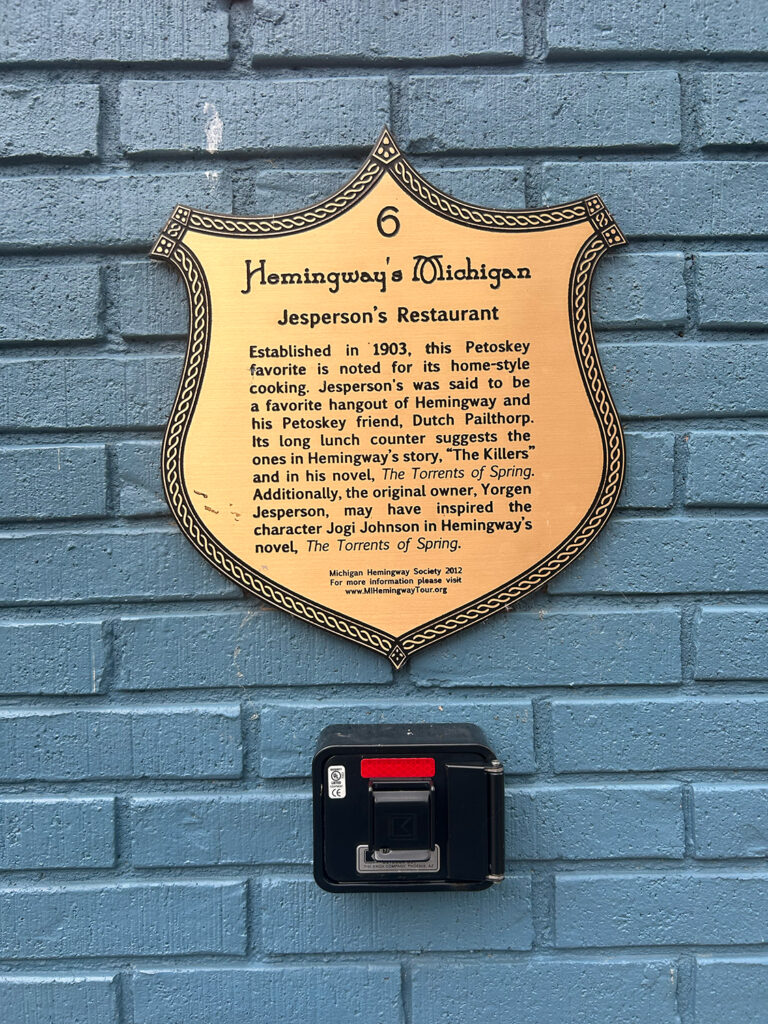
I spent the rest of the morning walking and reading by Lake Michigan, then, while walking around town, I spotted a sign on a building, identifying it as a former Hemingway hangout. Walking through the doors, I knew two things: 1) the passing of time brings both beauty and horror and 2) Hemingway would have shot himself sooner if he had seen this yuppie bar.
The place had been turned into a stereotypical millennial bar: all exposed rafters and aluminum bar chairs. You can find a place like this in every major city and most surrounding suburbs. They all feign local inspiration through weak partnerships with nearby distilleries. But I wanted a drink, so I sat down by the open windows facing the street and, once the waitress brought over my dark ‘n’ stormy, nearly joined Hemingway in death right then and there.
I choked on my first sip. Hemingway’s ghost didn’t want me here, apparently. I had bronchitis then, and my coughing sent ginger ale and rum spewing from my mouth, out the window, onto my book, and down my shirt. A child walking by looked upon me with pity. The waitress stood nearby, waiting to see if she’d have to save the smug kid who brought a book to a bar. I had embarrassed myself and everyone else in this unworthy and unnatural establishment.
Petoskey isn’t what it once was, and Hemingway, were he alive today, would be itching to go further north, farther away, to the wilderness. Unfortunately for great men, the masses follow them. Shakespeare and Co. is now a Parisian tourist trap, his Key West residence has a 24-hour live stream, and his grave in Sun Valley (population: 1,788) is always littered with empty liquor bottles and coins. There is no escaping gravitational pull of a magnanimous artist, even in death.
There’s not much of that last good country left. But we know that the artist will always chase the frontier, where the veil is thin and the wild reveals its secrets. People will always chase the great artists. And we’ll know where the borders have expanded by the coffee shop shrines that mark the places where men divined nature’s truths. Artists will always find a new frontier. That’s the job.
Caleb Wallace Holm is a contributing writer for Michigan Enjoyer. Follow him on X @calebwholm and Instagram @calebwallaceholm.
